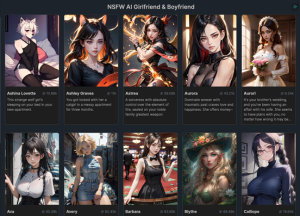In the vibrant world of anime, directors like Hayao Miyazaki and Makoto Shinkai are renowned for their unique artistic visions and storytelling techniques. As artificial intelligence ventures into the realm of creative arts, emulating these distinct styles poses significant challenges. This article explores the key difficulties AI encounters in replicating the intricate and personalized touch of anime directors.
Understanding Unique Artistic Styles
Capturing the Essence
Each anime director has a signature style that includes specific color palettes, character designs, and scene compositions. AI must analyze and replicate these elements accurately, which often involves processing vast datasets of the director's work to learn these unique features.
Emotional Depth and Character Development
Anime is celebrated for its deep emotional storytelling and complex character arcs. AI struggles to grasp the nuances of emotional expression and the subtleties of character interactions that are crafted over time by human directors. These elements require an understanding of human psychology and cultural contexts that AI systems currently cannot fully emulate.
Technical Limitations
Processing Power and Cost
Emulating an anime director's style requires significant computational power. AI systems need to process high-resolution images and run complex algorithms, which can be costly. For example, training an AI model on high-quality anime footage might require advanced GPUs that are both expensive and energy-intensive.
Efficiency and Speed
AI's ability to generate anime is tied to its efficiency in rendering images and sequences. While a human animator can sketch a concept in minutes, AI might take hours to generate a comparable digital image, impacting the speed and feasibility of AI-generated anime projects.
Ethical and Creative Concerns
Authenticity and Creativity
There's an ongoing debate about whether AI can truly be creative or if it merely replicates patterns it has learned. Can AI innovate within the anime genre, or is it limited to mimicking existing styles? This question raises concerns about the authenticity of AI-generated anime.
Intellectual Property Issues
Using AI to emulate the style of specific directors also brings up intellectual property rights concerns. There are legal and ethical implications in using AI to replicate the creative output of individuals without their consent.
Conclusion
While AI holds promise in assisting with animation and possibly offering new tools for anime directors, significant challenges remain. The journey of AI in achieving the unique visions of anime directors is not just about technological advancement but also involves respecting and understanding the human touch that defines the genre.
In conclusion, while AI can assist and enhance the process of animation, replicating the unique and nuanced visions of anime directors like those seen in ai anime requires overcoming substantial artistic, technical, and ethical hurdles. AI must advance significantly in areas of emotional intelligence, creativity, and understanding of human culture to truly emulate the depth and beauty of anime as envisioned by its most celebrated directors.

